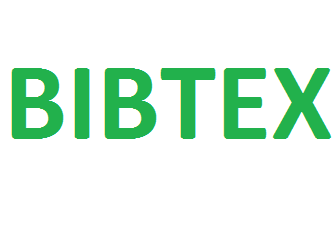
The Academic Perspective Procedia publishes Academic Platform symposiums papers as three volumes in a year. DOI number is given to all of our papers.
Publisher : Academic Perspective
Journal DOI : 10.33793/acperpro
Journal eISSN : 2667-5862
The Role of Artificial Intelligence Based Robots in Education: Transforming Learning and Teaching
Abstract
Rapid developments in the field of artificial intelligence have enabled robots, which have great potential to be used as educational technology, to become an important component in learning processes. In order to provide a better understanding of this development and to reveal trends, we present a review of the use of robots in education. In this context, 1061 articles were analyzed in Wos and Scopus databases with keywords such as social, humanoid robot. The data were merged with the R Studio program and analyzed through the bibliometrix package. The findings show that the use of robots in education has increased significantly in recent years, concepts such as artificial intelligence, machine learning and human-robot interaction have come to the forefront, and the use of artificial intelligence-supported robots in education has increased. This situation has both enriched the learning experiences of students and led researchers to conduct more studies in this field.
References
[1] Chu, S. T., Hwang, G. J., & Tu, Y. F. (2022). Artificial intelligence-based robots in education: A systematic review of selected SSCI publications. Computers and education: Artificial intelligence, 3, 100091.
[2] Evripidou, S., Georgiou, K., Doitsidis, L., Amanatiadis, A. A., Zinonos, Z., & Chatzichristofis, S. A. (2020). Educational robotics: Platforms, competitions and expected learning outcomes. IEEE Access, 8, 219534–219562. https://doi.org/ 10.1109/ACCESS.2020.3042555
[3] Lin, V., Yeh, H. C., & Chen, N. S. (2022). A systematic review on oral interactions in robot-assisted language learning. Electronics, 11(2), 290. https://doi.org/10.3390/ electronics11020290
[4] Chan, K. S., & Zary, N. (2019). Applications and challenges of implementing artificial intelligence in medical education: Integrative review. JMIR medical education, 5(1), Article e13930. https://doi.org/10.2196/13930
[5] Papadopoulos, I., Lazzarino, R., Miah, S., Weaver, T., Thomas, B., & Koulouglioti, C. (2020). A systematic review of the literature regarding socially assistive robots in pre-tertiary education. Computers & Education, 155, Article 103924. https://doi.org/ 10.1016/j.compedu.2020.103924
[6] Yang, J., & Zhang, B. (2019). Artificial intelligence in intelligent tutoring robots: A systematic review and design guidelines. Applied Sciences, 9(10), 2078. https://doi. org/10.3390/app9102078
[7] Benitti, F. B. V., & Spolaˆor, N. (2017). How have robots supported STEM teaching?. In Robotics in STEM education (pp. 103–129). Cham: Springer. https://doi.org/10.1007/ 978-3-319-57786-9_5.
[8] Liu, C., Hou, J., Tu, Y. F., Wang, Y., & Hwang, G. J. (2021). Incorporating a reflective thinking promoting mechanism into artificial intelligence-supported English writing environments. Interactive Learning Environments, 1–19. https://doi.org/10.1080/ 10494820.2021.2012812
[9] Hwang, G. J., Tu, Y. F., & Tang, K. Y. (2022). AI in online-learning research: Visualizing and interpreting the journal publications from 1997 to 2019. International Review of Research in Open and Distance Learning, 23(1), 104–130. https://doi.org/10.19173/ irrodl.v23i1.6319
[10] Chang, C. Y., Hwang, G. J., & Gau, M. L. (2022). Promoting students’ learning achievement and self-efficacy: A mobile chatbot approach for nursing training. British Journal of Educational Technology, 53(1), 171–188. https://doi.org/10.1111/ bjet.13158
[11] Woolf, B.P. Building Inteligent Interactive Tutors, Student-Centered Strategies for Revolutionizing E-Learning; Morgan Kaufman: Burlington, MA, USA, 2008.
[12] Yıldız, M., & Yılmaz, T. K. (2023). Bibliometric Analysis in Scientific Research Using R: A Review of Scopus and Web of Science Databases. Journal of Data Applications, (2), 31-46.
[13] Donthu, N., Kumar, S., Mukherjee, D., Pandey, N., & Lim, W. M. (2021). How to conduct a bibliometric analysis: An overview and guidelines. Journal of business research, 133, 285-296.
[14] López-Belmonte, J., Segura-Robles, A., Moreno-Guerrero, A. J., & Parra-Gonzalez, M. E. (2021). Robotics in education: a scientific mapping of the literature in Web of Science. Electronics, 10(3), 291.
[15] Pai, R. Y., Shetty, A., Dinesh, T. K., Shetty, A. D., & Pillai, N. (2024). Effectiveness of social robots as a tutoring and learning companion: a bibliometric analysis. Cogent Business & Management, 11(1), 2299075.
Cite
-
 %0 Academic Perspective Procedia (ACPERPRO) The Role of Artificial Intelligence Based Robots in Education: Transforming Learning and Teaching% A Mehmet Yıldız , Türkan Karakuş Yılmaz% T The Role of Artificial Intelligence Based Robots in Education: Transforming Learning and Teaching% D 1/6/2025% J Academic Perspective Procedia (ACPERPRO)% P 223-231% V 6% N 2% R doi: -% U -
%0 Academic Perspective Procedia (ACPERPRO) The Role of Artificial Intelligence Based Robots in Education: Transforming Learning and Teaching% A Mehmet Yıldız , Türkan Karakuş Yılmaz% T The Role of Artificial Intelligence Based Robots in Education: Transforming Learning and Teaching% D 1/6/2025% J Academic Perspective Procedia (ACPERPRO)% P 223-231% V 6% N 2% R doi: -% U -




